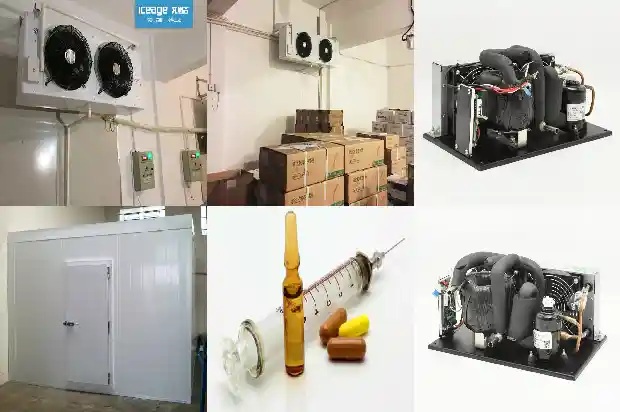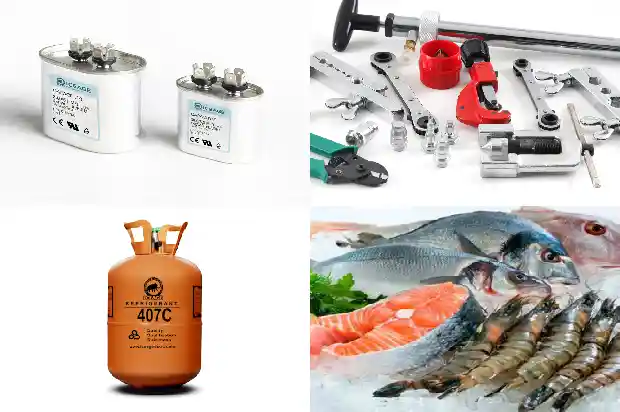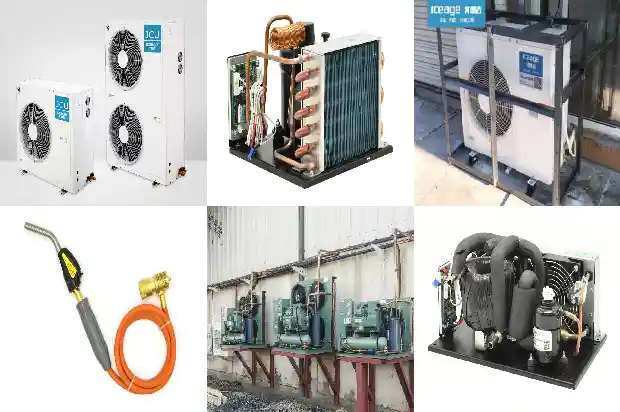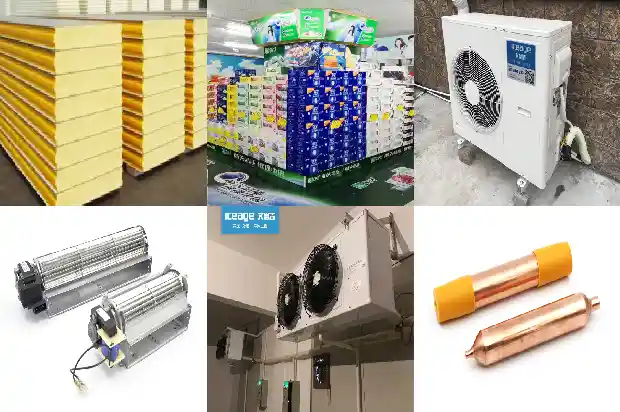What are the reasons for the poor oil return of screw compressors?
2024-09-08
It is a very troublesome thing if the oil return of the screw compressor is not smooth. Generally speaking, the main reason for the unsmooth oil return of the screw compressor is the phenomenon of gas mixture of lubricating oil and refrigerant during the operation process. Specifically, during the operation of the refrigeration system, the mutual solubility of the refrigerant and the refrigerator lubricating oil will cause the lubricating oil in the refrigeration compressor to be discharged into the condenser in the form of aerosol and micro-drop gas along with the operation of the machine and the refrigerant. If the oil separator has a poor effect or the system is not well designed, it will cause problems such as poor separation effect and unsmooth oil return of the system. Of course, the prerequisite is that you have not used fake oil.
What are the impacts caused by the unsmooth oil return of the screw compressor?
When the screw compressor has unsmooth oil return, a large amount of lubricating oil will be retained in the evaporator pipeline. When the oil film increases by 0.1mm, it will directly affect the cooling of the system. On the other hand, the machine cannot operate due to lack of oil and needs to continuously replenish the lubricating oil. This will lead to more and more lubricating oil accumulated in the system, resulting in a vicious cycle, increasing the operating cost and reducing the operating reliability. Generally, it is allowed that the oil-gas mixture with the refrigerant gas flow rate below 1% circulates in the system.
How to solve the problem of unsmooth oil return of the screw compressor?
There are two ways for the compressor to return oil, one is oil separator return oil, and the other is return pipe return oil. The oil separator is installed on the exhaust pipe of the compressor. Generally, it can separate 50 - 95% of the oil carryover, has a good oil return effect and a fast speed, and greatly reduces the amount of oil entering the system pipeline, thus effectively extending the non-oil return operation time. In refrigeration systems of cold storages with extremely long pipelines, full-liquid ice-making systems, and freeze-drying equipment with very low temperatures, it is not uncommon that there is no oil return or very little oil return for more than ten minutes or even dozens of minutes after startup. A poorly designed system will have the problem of the compressor's oil pressure being too low and the machine shutting down. Installing a high-efficiency oil separator in this kind of refrigeration system can greatly extend the compressor's non-oil return operation time and make the compressor safely pass through the crisis stage without oil return after startup. The lubricating oil that has not been separated will enter the system and flow in the pipe with the refrigerant to form an oil cycle.
After the lubricating oil enters the evaporator, on the one hand, due to the low temperature and low solubility, a part of the lubricating oil is separated from the refrigerant; on the other hand, due to the low temperature and high viscosity, the separated lubricating oil is easy to adhere to the inner wall of the pipe and has difficulty in flowing.
The lower the evaporation temperature, the more difficult the oil return.
In practical applications, oil return problems caused by improper design of the evaporator and return gas pipeline are not rare. For R22 and R404A systems, the oil return of the full-liquid evaporator is very difficult, and the design of the oil return pipeline of the system must be very careful.
When the position of the compressor is higher than that of the evaporator, the oil return bend on the vertical return gas pipe is necessary. The oil return bend should be as compact as possible to reduce the oil storage. The spacing between the oil return bends should be appropriate. When the number of oil return bends is relatively large, some lubricating oil should be replenished. The oil return pipeline of the variable load system must also be careful. When the load is reduced, the return gas speed will decrease, and too low speed is not conducive to oil return. In order to ensure oil return under low load, a double riser can be used for the vertical suction pipe.
Moreover, frequent starting of the compressor is not conducive to oil return. Since the compressor stops after a very short continuous operation time, a stable high-speed gas flow cannot be formed in the return gas pipe in time, and the lubricating oil can only stay in the pipeline. If the oil return is less than the oil carryover, the compressor will lack oil. The shorter the operation time, the longer the pipeline, and the more complex the system, the more prominent the oil return problem will be. Therefore, generally, do not start the compressor frequently.
What are the impacts caused by the unsmooth oil return of the screw compressor?
When the screw compressor has unsmooth oil return, a large amount of lubricating oil will be retained in the evaporator pipeline. When the oil film increases by 0.1mm, it will directly affect the cooling of the system. On the other hand, the machine cannot operate due to lack of oil and needs to continuously replenish the lubricating oil. This will lead to more and more lubricating oil accumulated in the system, resulting in a vicious cycle, increasing the operating cost and reducing the operating reliability. Generally, it is allowed that the oil-gas mixture with the refrigerant gas flow rate below 1% circulates in the system.
How to solve the problem of unsmooth oil return of the screw compressor?
There are two ways for the compressor to return oil, one is oil separator return oil, and the other is return pipe return oil. The oil separator is installed on the exhaust pipe of the compressor. Generally, it can separate 50 - 95% of the oil carryover, has a good oil return effect and a fast speed, and greatly reduces the amount of oil entering the system pipeline, thus effectively extending the non-oil return operation time. In refrigeration systems of cold storages with extremely long pipelines, full-liquid ice-making systems, and freeze-drying equipment with very low temperatures, it is not uncommon that there is no oil return or very little oil return for more than ten minutes or even dozens of minutes after startup. A poorly designed system will have the problem of the compressor's oil pressure being too low and the machine shutting down. Installing a high-efficiency oil separator in this kind of refrigeration system can greatly extend the compressor's non-oil return operation time and make the compressor safely pass through the crisis stage without oil return after startup. The lubricating oil that has not been separated will enter the system and flow in the pipe with the refrigerant to form an oil cycle.
After the lubricating oil enters the evaporator, on the one hand, due to the low temperature and low solubility, a part of the lubricating oil is separated from the refrigerant; on the other hand, due to the low temperature and high viscosity, the separated lubricating oil is easy to adhere to the inner wall of the pipe and has difficulty in flowing.
The lower the evaporation temperature, the more difficult the oil return.


In practical applications, oil return problems caused by improper design of the evaporator and return gas pipeline are not rare. For R22 and R404A systems, the oil return of the full-liquid evaporator is very difficult, and the design of the oil return pipeline of the system must be very careful.

When the position of the compressor is higher than that of the evaporator, the oil return bend on the vertical return gas pipe is necessary. The oil return bend should be as compact as possible to reduce the oil storage. The spacing between the oil return bends should be appropriate. When the number of oil return bends is relatively large, some lubricating oil should be replenished. The oil return pipeline of the variable load system must also be careful. When the load is reduced, the return gas speed will decrease, and too low speed is not conducive to oil return. In order to ensure oil return under low load, a double riser can be used for the vertical suction pipe.

Moreover, frequent starting of the compressor is not conducive to oil return. Since the compressor stops after a very short continuous operation time, a stable high-speed gas flow cannot be formed in the return gas pipe in time, and the lubricating oil can only stay in the pipeline. If the oil return is less than the oil carryover, the compressor will lack oil. The shorter the operation time, the longer the pipeline, and the more complex the system, the more prominent the oil return problem will be. Therefore, generally, do not start the compressor frequently.
Related Articles
- What Are the Common Reasons for Difficulties in Cooling a Cold Storage?
- Analysis of Seven Reasons for Ice Formation in Computer Room Air Conditioners
- Reasons for Frost Formation in Cold Storage and Defrosting Methods
- What Are the Reasons for Insufficient Air Output of Screw Air Compressors?
- Reasons for Pump Body Failures in Cold Storage Compressors
- What are the reasons for the inactivity of the automotive air conditioning compressor? What are the common faults?
- What are the reasons for the frequent start-up and tripping of the refrigerated air dryer in the cold storage?
- Reasons and Solutions for High and Low Condensing Pressure in Air-cooled and Water-cooled Systems
- 15 Reasons for Excessive Temperature Rise of Motors
- Reasons for Installing Thermal Insulation Layers in Cold Storages
- 7 Reasons for Low Air Pressure in Cold Water Unit
- Reasons for Higher Cost of Controlled Atmosphere Cold Storage than Ordinary Cold Storage
- Five potential reasons for the deteriorating performance of car air conditioning
- Nine common reasons for compressor damage
- Has Your Refrigeration System Experienced "Oil Carry - over"?
- Causes and Prevention of "Primary Condensation" and "Secondary Condensation" in Fan - Coil Units
- Common Faults of HVAC Fan Coil Units
- Introduction to Oil Collector in Refrigeration System
